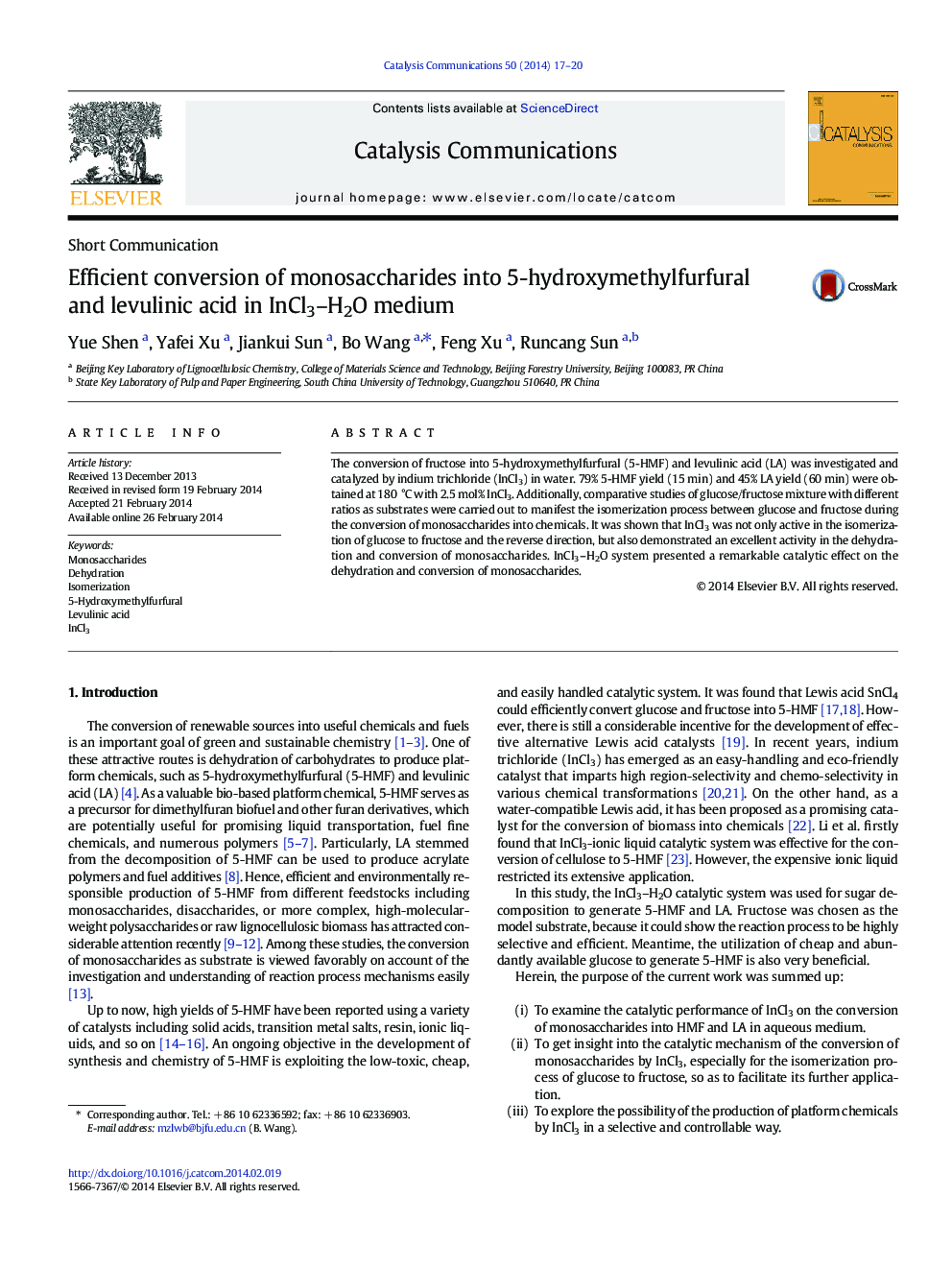| Article ID | Journal | Published Year | Pages | File Type |
|---|---|---|---|---|
| 50028 | Catalysis Communications | 2014 | 4 Pages |
•The conversions of fructose were better than that of glucose owing to the glucose stable ring structure.•InCl3 was active in the isomerization of glucose to fructose and the reverse direction.•The degree of enolization determined the process of aldose to ketose.
The conversion of fructose into 5-hydroxymethylfurfural (5-HMF) and levulinic acid (LA) was investigated and catalyzed by indium trichloride (InCl3) in water. 79% 5-HMF yield (15 min) and 45% LA yield (60 min) were obtained at 180 °C with 2.5 mol% InCl3. Additionally, comparative studies of glucose/fructose mixture with different ratios as substrates were carried out to manifest the isomerization process between glucose and fructose during the conversion of monosaccharides into chemicals. It was shown that InCl3 was not only active in the isomerization of glucose to fructose and the reverse direction, but also demonstrated an excellent activity in the dehydration and conversion of monosaccharides. InCl3–H2O system presented a remarkable catalytic effect on the dehydration and conversion of monosaccharides.
Graphical abstractFigure optionsDownload full-size imageDownload as PowerPoint slide
